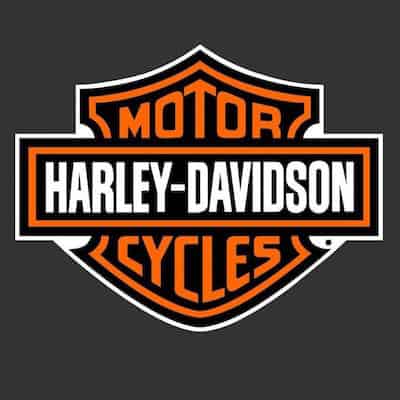Harley-Davidson
Brand Strategy Analysis

Category:
Automotive – motorcycles & scooters
Owner of the brand:
Harley-Davidson Motor Company, Inc.
Key Competitors:
Honda, Suzuki, Yamaha, Kawasaki, BMW, Indian
Fulfiling dreams of personal freedom.
Independence, freedom, individuality, heritage.
Powerful, adventurous, tough, American, masculine.
Outlaw
“All for freedom. Freedom for all”
“Live Your Legend”
Harley-Davidson is a lifestyle brand defining its brand purpose as “fulfiling dreams of personal freedom”. It is associated with the thrill of the road, rebellious spirit, personal freedom, individuality and independence from social norms. Its image has been built partially by the company’s activities and partially by the activities of the communities identifying with the brand, bikers in particular. Their unique style (leather outfits, beards, tattoos, patches etc.) and the outlaw character of their clubs added an even tougher, more rebellious and non-conformist edge to the Harley-Davidson’s brand image.
“We fulfill dreams of personal freedom.
OUR ROOTS
In 1903, out of a small shed in Milwaukee, Wisconsin, four young men lit a cultural wildfire that would grow and spread across geographies and generations. Their innovation and imagination for what was possible on two wheels sparked a transportation revolution and a motorcycle culture that would make Harley-Davidson one of the most recognized and revered brands in the world.
Since the beginning, we’ve proudly and authentically stood up for the things we believe in most: the rebel spirit in all of us, unity, individuality and personal freedom. These beliefs and a desire to find freedom on two wheels forge a bond that brings Harley-Davidson riders, employees, dealers, and suppliers together.
On our quest to build the next generation of riders globally, we welcome all who share these beliefs and a desire to enjoy the world on a motorcycle.”[5]
the world better than we found it.”
Significant Campaigns
In the past, Harley-Davidson brand was present on multiple products which had little to do with motorcycles: perfumes, aftershaves, baby clothes, ties, just to name a few. The company realised that it had risked diluting the brand image and losing its most loyal fans and ceased the brand-stretching strategy.
Harley-Davidson embodies the ideals of the Outlaw archetype like no other brand – it stands for personal freedom, individuality and a rebellious spirit.




Harley-Davidson is an iconic American brand with roots dating back to 1903, when William S. Harley and brothers, Arthur and Walter Davidson, built their first (unsuccessful) motor-bicycle in Milwaukee, Wisconsin. The brand went through multiple ups and downs throughout its history and enjoyed the highest sales in 2006[1]. It was substantially affected by the financial crisis of 2007 and 2008 and has been trying to regain market relevance since then, but so far with no spectacular success. Business analysts believe that Harley-Davidson’s biggest problem is its ageing target group which is the consequence of the fact that younger generations are less interested in the motorcycle category in general and that the Harley-Davidson brand hasn’t managed to build as strong a brand appeal among the millennial audience as it did among their parents.